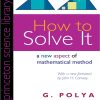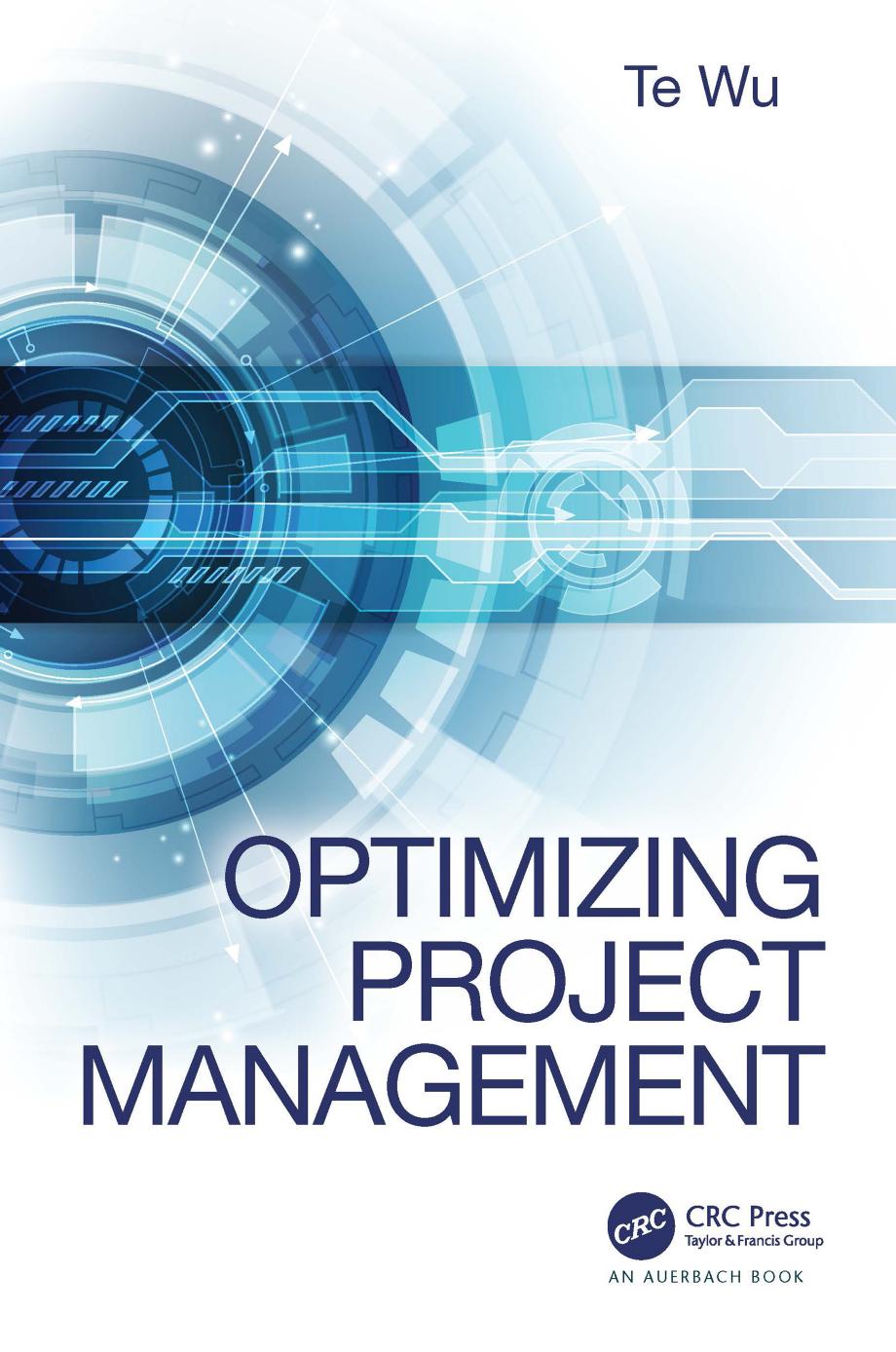Optimizing Project Management 1st Edition by Te Wu 9781000063950 100006395X
$70.00 Original price was: $70.00.$35.00Current price is: $35.00.
Instant download Optimizing Project Management Te Wu after payment
Optimizing Project Management 1st Edition by Te Wu – Ebook PDF Instant Download/Delivery: 9781000063950, 100006395X
Full dowload Optimizing Project Management 1st Edition after payment

Product details:
• ISBN 10:100006395X
• ISBN 13:978100006395
• Author:Te Wu
Optimizing Project Management
Optimizing Project Management 1st Table of contents:
PART 1 Setting the Stage
1 Project Management – What and Why?
Summary
1.1 Importance of Project Management
1.1.1 Overview
1.1.2 Project Management and Its Environment
1.2 What Is Project Management?
1.2.1 Dimensions of Project Management
1.2.2 Recognizing a Successful Project
1.3 The Role of Project Manager
1.4 About the Project Management Institute
1.5 Duty of Care
1.5.1 Case 1: Flint Michigan Water Crisis
1.5.2 Case 2: Boeing 737 Max Series
1.6 Why Project Management Is an Exciting Field
1.7 Project Management in Motion
2 Organizing Project Management Knowledge – Principles, Knowledge Domains, Life Cycles, and Agile versus Traditional Approaches
Summary
2.1 Project Management Principles
2.2 Core Project Management Knowledge Domains
2.3 Additional Knowledge Domains
2.4 Project Life Cycle
2.5 Predictive Approach versus Adaptive Approach
2.5.1 Derivative Methodologies
2.6 Project Management Process
2.7 Optimizing Project through “Right-Size” Project Management
2.7.1 Four Guidelines for Right-Size Project Management
2.8 Project Management in Motion
PART 2 Projects in Motion – From Ideas to Results
3 Ideation – Aligning Projects with Strategy
Summary
3.1 Strategic Business Execution and Environmental Context
3.2 Entrance and Exit Criteria for Ideation
3.3 Project Selection
3.4 Making Sound Project Decisions
3.5 Developing a Culture of Execution
3.6 Business Case
3.7 Project Management in Motion
4 Initiation – Starting the Project Right
Summary
4.1 The Challenges of Getting Started
4.2 What Is the Fuzzy Front End?
4.2.1 Anatomy of the Fuzzy Front End
4.3 Good Practices for Managing the Fuzzy Front End
4.4 Seven Steps to Managing the Fuzzy Front End
4.5 The Project Charter
4.5.1 Project Charter Key Elements
4.6 Project Management in Motion
5 Preparation – Planning to Achieve Optimal Implementation
Summary
5.1 About Preparation Phase
5.2 Project Complexity
5.2.1 Examples of Project Complexity – Problems and Potential Solutions
5.3 Identifying and Confronting Project Complexity
5.4 Project Management in Motion
6 Implementing Projects – Getting It Done
Summary
6.1 The Art of Execution
6.2 Monitoring Projects
6.3 Managing Special Situations in Projects
6.4 Controlling Projects
6.5 Project Challenges during Implementation
6.6 Think Like a Project Manager
6.7 Achieve Sound Decisions
6.8 Project Management in Motion
7 Project Transition and/or Closure – Celebrating Success
Summary
7.1 Transitioning and/or Closing Projects or Phases
7.2 Specific Transitions and/or Closures
7.2.1 Scope Transition and/or Closure
7.2.2 Schedule Transition and/or Closure
7.2.3 Cost Transition and/or Closure
7.2.4 Quality Transition and/or Closure
7.2.5 Resource Transition and/or Closure
7.2.6 Communication Transition and/or Closure
7.2.7 Risk Transition and/or Closure
7.2.8 Procurement Transition and/or Closure
7.2.9 Stakeholder Transition and/or Closure
7.2.10 Project Integration Transition and/or Closure
7.3 Project Management in Motion
PART 3 Knowledge Domain
8 Project Integration Management – The Most Important Knowledge Domain
Summary
8.1 Importance of Project Integration
8.2 Project Integration Artifacts in Project Preparation Phase
8.3 Managing Project Work during Project Implementation
8.3.1 Managing Project Knowledge
8.4 How to Control Performance and Manage Change
8.4.1 Monitor and Control Project Work
8.4.2 Perform Integrated Change Control
8.5 Integrated Transitioning and/or Closing Projects
8.5.1 Postproject Evaluation
8.6 Project Management in Motion
9 Stakeholder Management – Knowing the People
Summary
9.1 Importance of Engaging Project Stakeholders
9.2 Identifying Stakeholders
9.2.1 Stakeholder Management Tools
9.3 Planning Stakeholder Engagement
9.4 Engaging Stakeholder
9.4.1 Monitor Stakeholder Satisfaction
9.5 Transitioning and/or Closing Stakeholder Engagement
9.6 Project Management in Motion
10 Scope Management – Defining Scope and Determining Requirements
Summary
10.1 What Is Scope Management?
10.1.1 Managing Scope in a Turbulent Environment
10.2 Conceiving Initial Scope
10.3 Planning and Defining Scope
10.3.1 Gathering Requirements
10.3.2 Defining and Refining Scope
10.3.3 Creating the Work Breakdown Structure
10.3.3.1 Work Breakdown Structure Components
10.3.3.2 Create Work Breakdown Structure Process
10.3.3.3 Validating Project Scope
10.4 Achieving and Control Scope
10.5 Transitioning and/or Closing Scope
10.6 Project Management in Motion
11 Schedule Management – Understanding “When”
Summary
11.1 Importance of Schedule Management
11.2 Conceiving Initial Schedule
11.2.1 Planning Schedule Management
11.3 Planning, Estimating, Sequencing, and Validating Schedule
11.3.1 Defining Project Activities
11.3.1.1 Key Considerations for Defining Project Activities
11.3.2 Sequencing Project Activities
11.3.3 Determining Dependencies
11.3.4 Estimating Project Activity Duration
11.3.5 Developing and Validating the Integrated Project Schedule
11.4 Controlling Schedule
11.5 Transitioning and/or Closing Schedule
11.6 Project Management in Motion
12 Resource Management – Defining the Resources Required to Tackle Projects
Summary
12.1 What Is Resource Management?
12.1.1 Identifying Project Resource Needs
12.1.2 Understanding Project Resources
12.2 Planning and Estimating Project Resources
12.3 Obtaining and Working with Resources
12.3.1 Developing Project Teams
12.4 Leading Teams and Controlling Resources
12.4.1 Controlling Resources
12.5 Transitioning and/or Closing Key Resources
12.6 Project Management in Motion
13 Cost Management – How to Develop and Manage Budgets
Summary
13.1 Effectively Plan Project Cost
13.2 Proposing Initial Project Costs
13.3 Planning and Estimating Project Costs and Budget
13.3.1 Planning Cost Management
13.3.1.1 Cost Management Plan Components
13.3.2 Estimating Project Cost
13.3.3 Determining Budget and Controlling Cost
13.4 Managing and Controlling Project Costs
13.4.1 Earned Value Management System
13.5 Transitioning and/or Closing Project Costs
13.6 Project Management in Motion
14 Communication Management – Ensuring the Full Handshake
Summary
14.1 Importance of Project Communication
14.2 Developing Communication and Information Management Plans
14.2.1 Creating the Communications Management Plan
14.2.2 Developing Information Management Plan
14.3 Managing and Monitoring Communication and Information Exchanges
14.3.1 Cross Cultural Challenges in Communications and Information Management of Global Projects
14.3.2 Monitoring Communication and Controlling Information Flows
14.4 Transitioning and/or Closing Communication and Information Management
14.5 Project Management in Motion
15 Risk Management – Minimizing Surprises
Summary
15.1 Importance of Risk Management?
15.2 Identifying Top-Level Risks
15.3 Planning Risk Management
15.3.1 Risk Management Plan
15.3.2 Identifying Risks
15.3.3 Analyzing Risk
15.3.3.1 Qualitative Risk Analysis
15.3.3.2 Quantitative Risk Analysis
15.3.4 Planning Risk Responses and Contingencies
15.4 Monitoring Risk and Implementing Risk Response
15.4.1 Agile Approaches for Controlling Risk
15.5 Transitioning and/or Closing Risk
15.6 Project Management in Motion
16 Quality Management – Designing It Right
Summary
16.1 Project Quality Management
16.2 Determining Quality
16.3 Planning Quality Management
16.4 Managing and Controlling Quality
16.4.1 Controlling Quality
16.5 Validating Quality to Transitioning and/or Closing Project
16.6 Project Management in Motion
17 Project Supply Chain Management – Extending beyond the Internal Resources
Summary
17.1 What Is Supply Chain Management?
17.2 Initiation Evaluation of External Resource Needs
17.3 Planning Project Procurement
17.3.1 Make or Buy Decisions
17.3.2 Contracting Process
17.3.3 Contract Type
17.3.4 Transactional Purchases versus Strategic Procurement
17.4 Managing Project Supply Chain
17.4.1 Contracting
17.4.2 Managing Vendors
17.5 Transitioning and/or Closing Procurement
17.6 Project Management in Motion
18 Leveraging Conflicts – How to Find the Optimal Balance of Conflicts
Summary
18.1 Introduction to Project Conflict Management
18.2 Initial Evaluation of Project Conflicts
18.3 Planning to Tackle Project Conflicts
18.4 Managing Project Conflicts
18.5 Evaluating Results of Conflict Resolution
18.6 Project Management in Motion
19 Governance Management – Establishing Decision Framework
Summary
19.1 Principle of Project Governance
19.2 Initial Development of Project Governance Guidelines
19.3 Planning and Building Governance Structure and Processes
19.4 Operating Governance
19.5 Authorizing Project Transition and/or Closure
19.6 Project Management in Motion
PART 4 Beyond Project Management
20 Working with People – Building, Mobilizing, Managing, and Leading Project Teams
Summary
20.1 Importance of Project Leadership
20.1.1 The Trait Approach – “Great People” Theory
20.1.2 Behavioral Approach – What Good Leaders Do
20.1.3 Situational Approach – When Context Is Important
20.1.4 Servant Leadership – Placing Focus on the Followers
20.2 Building Strong Project Teams
20.3 Developing High-Performance Project Team
20.4 Understanding Project Executives
20.5 Project Management in Motion
21 Program, Portfolio, Service Management, and Strategic Business Execution
Summary
21.1 What Happens on the Day After?
21.2 What Is Service Management?
21.2.1 ITIL® 3.0
21.2.2 ITIL® 4.0
21.3 Beyond Project Closure
21.4 Business Execution in Rear View
21.5 Project Management in Motion
Appendix A: Selective Project Management Templates
Appendix B: Case Study – Whole World Enterprise (WWE)
Appendix C: Glossary of Key Terms
Index
People also search for Optimizing Project Management 1st:
optimizing project management
optimizing project management using artificial intelligence
project schedule optimization techniques
optimization project
optimization project example



